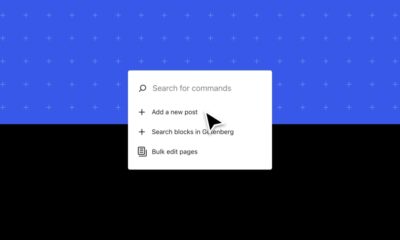MARKETING
Top SaaS Marketing Metrics and Strategies to Use in 2022

There are numerous SaaS marketing metrics to monitor. Even if we’re surrounded by resources and tracking software, it can be difficult to keep track of them all—even if you’re not doing the heavy lifting.
It is critical that we prioritize which SaaS marketing metrics are important to our businesses and, consequently, our teams. We don’t want to waste time on vanity metrics that won’t be very useful to us in the future.
We want to concentrate on improving our products, increasing acquisition and retention, and, ultimately, improving our bottom-line return on investment (ROI). Similarly, once you have a firm grasp of your target customer, competition, and selling point, you can begin developing your SaaS marketing strategy.
What exactly is SaaS?
SaaS or Software as a service represents subscription-only businesses. It is software viewed online through a subscription as opposed to being purchased and installed on a PC or laptop.
Shopify, HubSpot, and MailChimp are examples of well-known SaaS startups. While many people associate SaaS companies with selling directly to enterprises, consumer-facing SaaS companies include Netflix, Hulu, and Spotify.
SaaS Marketing Explained
At first glance, a SaaS marketing strategy appears to be no different than any other marketing strategy. You have a product, you promote and market it, and you hope to sell it to a large number of customers.
However, SaaS products are not the same as other products. For starters, you can’t physically hold a SaaS product in your hands; it lacks physical presence. As a result, selling SaaS products requires a different strategy. This is where SaaS tools and marketing come into play.
What do SaaS Marketing Metrics Mean?
SaaS marketing metrics are values that marketers use to evaluate the effectiveness of their strategies and campaigns. A metric can be used to
- compare the past performance of your SaaS business to its current performance;
- track your productivity against industry benchmarks; and
- compare your effectiveness to your competitors.
What Are the Top Saas Marketing Metrics?
Customer Turnover
If gaining new customers is your ultimate goal, then keeping your current ones is equally important. The customer churn rate calculates how much business you’ve lost in a given period of time. This is among the most important metrics for tracking your company’s day-to-day viability and can help you better understand customer retention metrics over specific dates or periods.
When you’re tracking customer churn, go beyond just the customer count. Determine the personas of these churned customers, as well as the industries or anything else distinctive that can shed light on why they did not renew.
Revenue Loss
To assess the external impact that some customers may have over others, revenue churn should be measured alongside customer churn. If the subscription price varies depending on the number of seats or users purchased, the customer churn rate may be significantly different from the churn rate if some customers generate significantly more revenue than others.
Customer Lifetime Value (CLV)

The average amount of money that your customers pay during their engagement with your company is referred to as customer lifetime value (CLV). CLV demonstrates how much your average customer is worth.
It can also demonstrate the value of your company to investors for those who are still in the startup phase. Because most SaaS businesses use subscription-based models, each renewal results in another year of recurring revenue, increasing the lifetime value per customer.
Customer Acquisition Cost (CAC)
Customer acquisition cost (CAC) identifies the exact cost of acquiring new customers as well as the value they bring to your company. When combined with CLV, this metric assists businesses in ensuring the viability of their business model.
New businesses should have customer acquisition as their top priority. Fully quantified CAC rates assist businesses in managing their growth and accurately estimating the value of their acquisition process.
Customer Engagement Score

A customer engagement score can give you an idea of how engaged a customer is — how frequently they log in, what they use your software for, and other contributing metrics that indicate whether or not they will churn.
The customer engagement score scale for each company will differ depending on how a typical customer or user interacts with your software. Create your own customer engagement score by creating a list of inputs that predict a customer’s happiness and longevity — beginning with your happiest, longest-standing customers.
The Net Promoter Score (NPS)
Unlike the previous financial steps, the net promoter score directly indicates how much value your customers receive from your offering. NPS measurement enables you to quickly determine why customers are dissatisfied and use their feedback to improve your offering. In the early stages of a SaaS business, customer feedback can help determine whether you have product/market fit.
You can obtain NPS from your customers by asking them a simple question: “How likely are you to be recommended to a friend or colleague?” On a scale of one to ten, with ten being the most likely and one being the least likely, customers can rank their likelihood to suggest. You can contact detractors who have given you a score of 6 or less to find out why they are unhappy with your service.
Sign-Ups for Free Trials
The referral traffic rate, overall website, and organic traffic, time spent on your website, number of social media shares, and so on are all important metrics, but there is one that encompasses them all.
The number of sign-ups for a free trial demonstrates how many people are actually interested in purchasing from your company. They are the most likely to convert, and higher rates indicate greater marketing success.
We’ve discussed some most important metrics. Let’s move on to important SaaS marketing strategies.
Timeless Marketing Strategies for SaaS

Make Use of Content Marketing
For every SaaS website, content marketing is a true lead generation strategy. Publishing high-quality content increases traffic to your website. Always choose the topics that are relevant to your target audience’s interests.
If you want your content to rank, generate backlinks and create stunning content. In order to determine how many backlinks you should have, perform a backlink analysis of ranking content. Once your content becomes relevant and engaging, your company will gain a reputation as an authority in the SaaS industry.
Spend Time Improving Your Website’s SEO
Nothing works as well as a comprehensive SEO strategy for increasing site traffic. Search engine optimization (SEO) works in tandem with content marketing analytics. The basic concept is straightforward.
A site must be tailored and tweaked so that it ranks as high as possible in search engine results pages. Only then will your website receive more traffic. Take a look at a good example of SEO and content marketing in general on the painter salary blog.
Invest in Paid Search (PPC)

PPC advertising is another Digital Marketing area worth investigating. As a SaaS marketing strategy, it should not be viewed as a replacement for content marketing and SEO. What it can be, however, is a fantastic complement to those two processes. Especially if you want to get some quick traffic wins.
If you do decide to invest in PPC ads, you want to get the most bang for your buck while keeping customer acquisition costs low. Your marketing team must create engaging and appealing advertisements that convey the benefits of your service. Repeated testing is the most effective way to improve the conversion rate of your ads. Create numerous ad copy variations, conduct extensive keyword research, and track metrics.
Implement Intelligent Referral Marketing
The digital equivalent of word-of-mouth advertising is referral marketing. It entails asking current customers to recommend your service to people they know, either privately via email or publicly via platforms such as LinkedIn.
Don’t forget when sending these types of messages to implement the untapped channel of email signatures. We believe email signatures are an untapped channel many marketing and sales teams need right now, but most don’t take advantage of it. This is a great strategy to develop. Here is an article about it. Referral marketing is an effective SaaS marketing strategy because it increases the likelihood of attracting qualified leads.
Make Available Free Trials and/or a Freemium Model
It’s difficult to find a SaaS company that doesn’t provide a free trial. This is because free trials are extremely effective in selling SaaS. A free trial can help users understand how your software works, from customer relationship management CRMs (Customer Relationship Management) to voice over internet protocol VoIP (Voice over IP).
A freemium model gives the customer an unlimited free version, but they must be paying subscribers to access many of the features. This way, you’re giving customers a taste of the benefits they’ll receive if they sign up properly.
Make Use of Outbound Marketing

Outbound marketing is when a company proactively contacts potential customers in order to pique their interest in a product or service that they are selling. Outbound marketing involves the company initiating the conversation and pushing a message to their customers rather than waiting for them to come to them. Outbound marketing examples include:
- Television commercials
- Radio commercials
- Telephone cold calling
- Emailing strangers
- Publications in the press
- Trade fairs
- Series of seminars
- Spam emails
- Media buys
Make It Simple to Sign Up
For anyone who runs a SaaS business, creating the signup page is usually the most difficult obstacle to overcome. If you get it right, you’ll be on your way to growing your business at a much faster rate. A long and complicated signup form is not acceptable. Your onboarding process should be short and efficient. Don’t ask for information that’s not critical.
Utilise Clear CTAs
Always tend to make moving around your website as frictionless and efficient as possible. You want the process of becoming a customer to be as straightforward as possible. This can be helped by incorporating clear calls to action (CTAs) into your content marketing strategy.
Get a VSA

A virtual sales assistant handles your sales and sales support tasks, freeing up your time to focus on ‘core’ functions that directly affect your revenue. Get yourself a virtual sales assistant to help you with sales while you focus on growing your business. Your sales VA will relieve you and your sales department of administrative duties.
To Summarize
So you now have many actionable steps and a wealth of additional information to assist you in reaching your SaaS marketing objectives. Implement all of these suggestions or just the ones that stand out to you. This will be your SaaS marketing strategy and it should reflect your brand and your business.













You must be logged in to post a comment Login